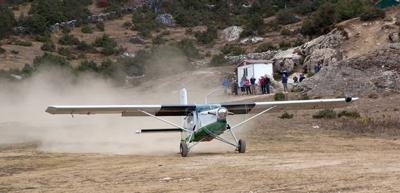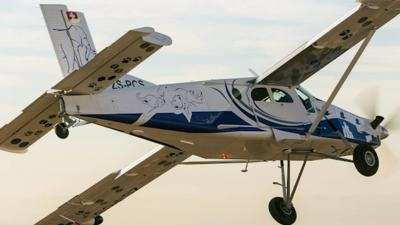Sat, Aug 08, 2020
AD 2020-16-02 Describes The Unsafe Condition As Rudder Shaft Assemblies With Incorrect Rivet Configurations
The FAA is adopting a new airworthiness directive (AD) for Pilatus Aircraft Ltd. Models PC-6, PC-6/350, PC-6/350-H1, PC-6/350-H2, PC-6/A, PC-6/A-H1, PC-6/A-H2, PC-6/B-H2, PC-6/B1-H2, PC-6/B2-H2, PC-6/B2-H4, PC-6/C-H2, PC-6/C1-H2, PC-6-H1, and PC-6-H2 airplanes.

This AD results from mandatory continuing airworthiness information (MCAI) issued by an aviation authority of another country to identify and correct an unsafe condition on an aviation product. The MCAI describes the unsafe condition as rudder shaft assemblies with incorrect rivet configurations. The FAA is issuing this AD to address the unsafe condition on these products. This AD is effective September 9, 2020.
Supplementary Information: The FAA issued a notice of proposed rulemaking (NPRM) to amend 14 CFR part 39 by adding an AD that would apply to Pilatus Aircraft Ltd. Models PC-6, PC-6/350, PC-6/350-H1, PC-6/350-H2, PC-6/A, PC-6/A-H1, PC-6/A-H2, PC-6/B-H2, PC-6/B1-H2, PC-6/B2-H2, PC-6/B2-H4, PC-6/CH2, PC-6/C1-H2, PC-6-H1, and PC-6-H2 airplanes. The NPRM was published in the Federal Register on July 5, 2019 (84 FR 32099). The NPRM proposed to correct an unsafe condition for the specified products and was based on AD No. 2018-0222, dated October 19, 2018, issued by the European Aviation Safety Agency (EASA), which is the Technical Agent for the Member States of the European Community (referred to after this as “the MCAI”).

The MCAI states:
- During a recent check flight with a PC-6, the pilot experienced loss of rudder control. The consequent precautionary landing resulted in a runway excursion and damage to the aeroplane, but without serious injuries to the occupants. The post-event inspection of the affected rudder shaft assembly found an incorrect rivet configuration. Subsequent investigation results identified that the tapered pins had been replaced with an insufficient quantity of rivets of unknown origin, which effectively constituted a modification that does not conform to any of the three different Pilatus-approved configurations. Prompted by this event, five more aeroplanes were inspected and various non-standard rivet configurations were found in the same area. It cannot be excluded that more PC-6 aeroplanes have had a similar modification applied.
- This condition, if not detected and corrected, could lead to failure or loss of rivets, possibly resulting in reduced control of the aeroplane. To address this potential unsafe condition, Pilatus Aircraft Ltd issued the [service bulletin] SB to provide inspection instructions.
- For the reasons described above, this [EASA] AD requires a one-time inspection of the affected part to determine the rivet configuration and, depending on findings, accomplishment of applicable corrective action(s). This [EASA] AD also requires inspection of affected parts held as spare, and depending on findings, corrective action(s), prior to installation.
More News
He Attempted To Restart The Engine Three Times. On The Third Restart Attempt, He Noticed That Flames Were Coming Out From The Right Wing Near The Fuel Cap Analysis: The pilot repor>[...]
Make Sure You NEVER Miss A New Story From Aero-News Network Do you ever feel like you never see posts from a certain person or page on Facebook or Instagram? Here’s how you c>[...]
From 2009 (YouTube Edition): Leading Air Show Performers Give Their Best Advice for Newcomers On December 6th through December 9th, the Paris Las Vegas Hotel hosted over 1,500 air >[...]
Aero Linx: NASA ASRS ASRS captures confidential reports, analyzes the resulting aviation safety data, and disseminates vital information to the aviation community. The ASRS is an i>[...]
“For our inaugural Pylon Racing Seminar in Roswell, we were thrilled to certify 60 pilots across our six closed-course pylon race classes. Not only did this year’s PRS >[...]
 NTSB Final Report: Rutan Long-EZ
NTSB Final Report: Rutan Long-EZ ANN FAQ: Turn On Post Notifications
ANN FAQ: Turn On Post Notifications Classic Aero-TV: ICAS Perspectives - Advice for New Air Show Performers
Classic Aero-TV: ICAS Perspectives - Advice for New Air Show Performers ANN's Daily Aero-Linx (06.28.25)
ANN's Daily Aero-Linx (06.28.25) Aero-News: Quote of the Day (06.28.25)
Aero-News: Quote of the Day (06.28.25)




